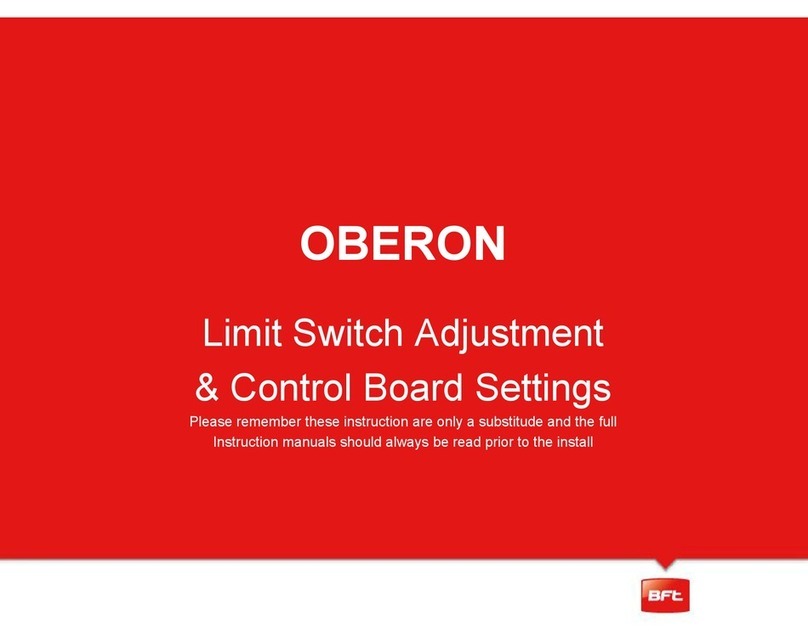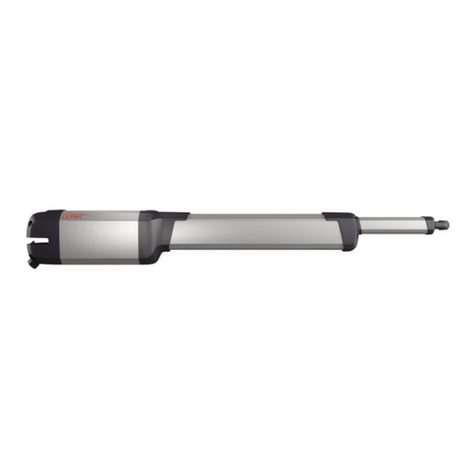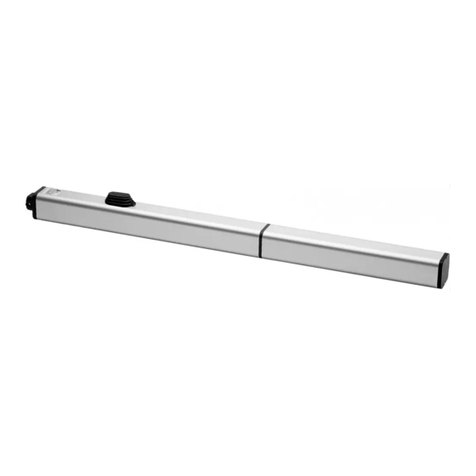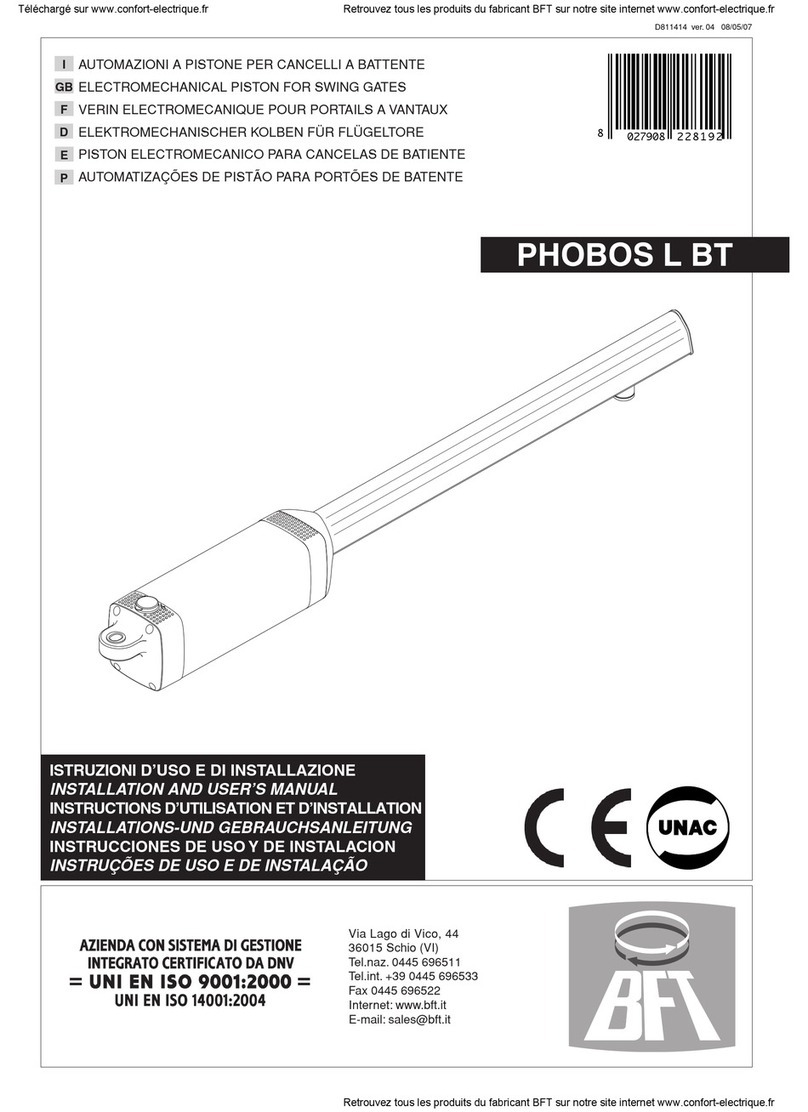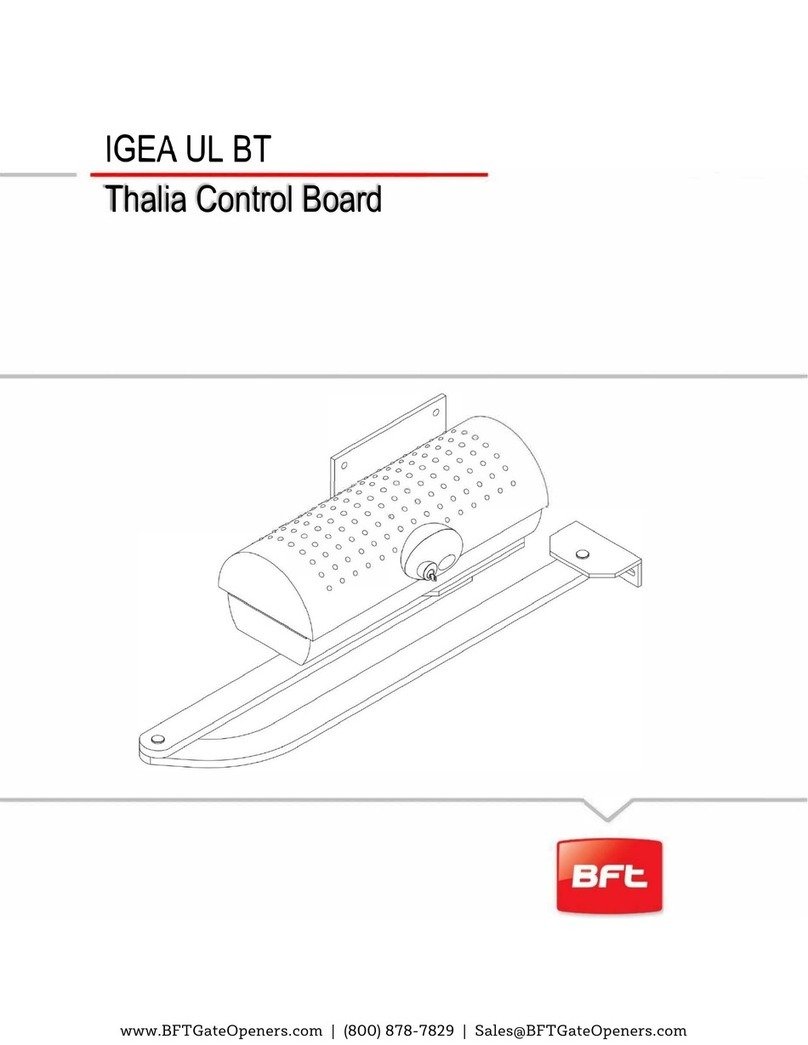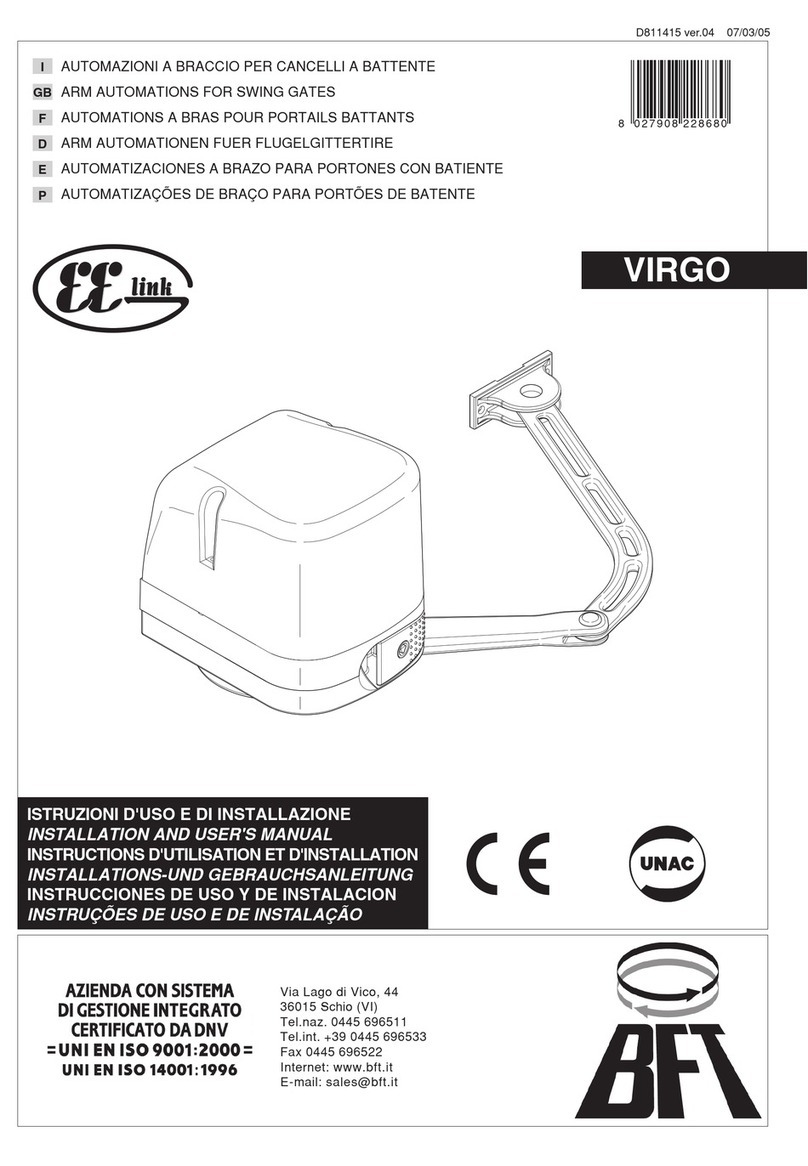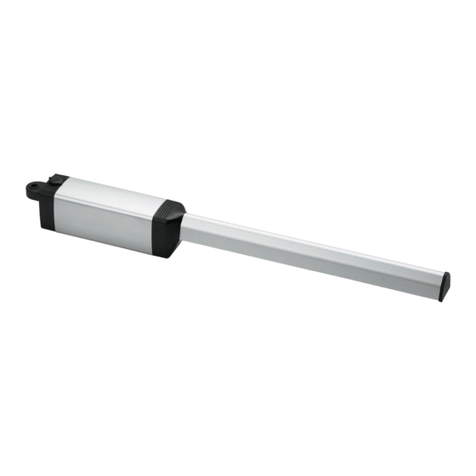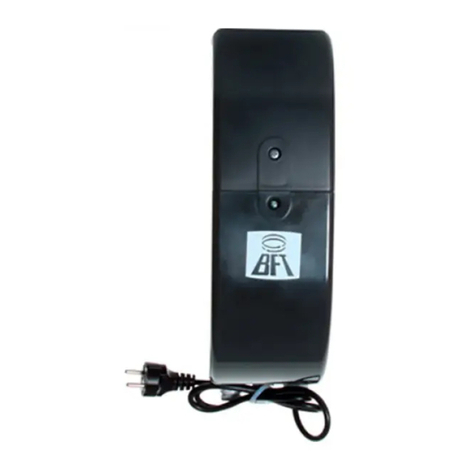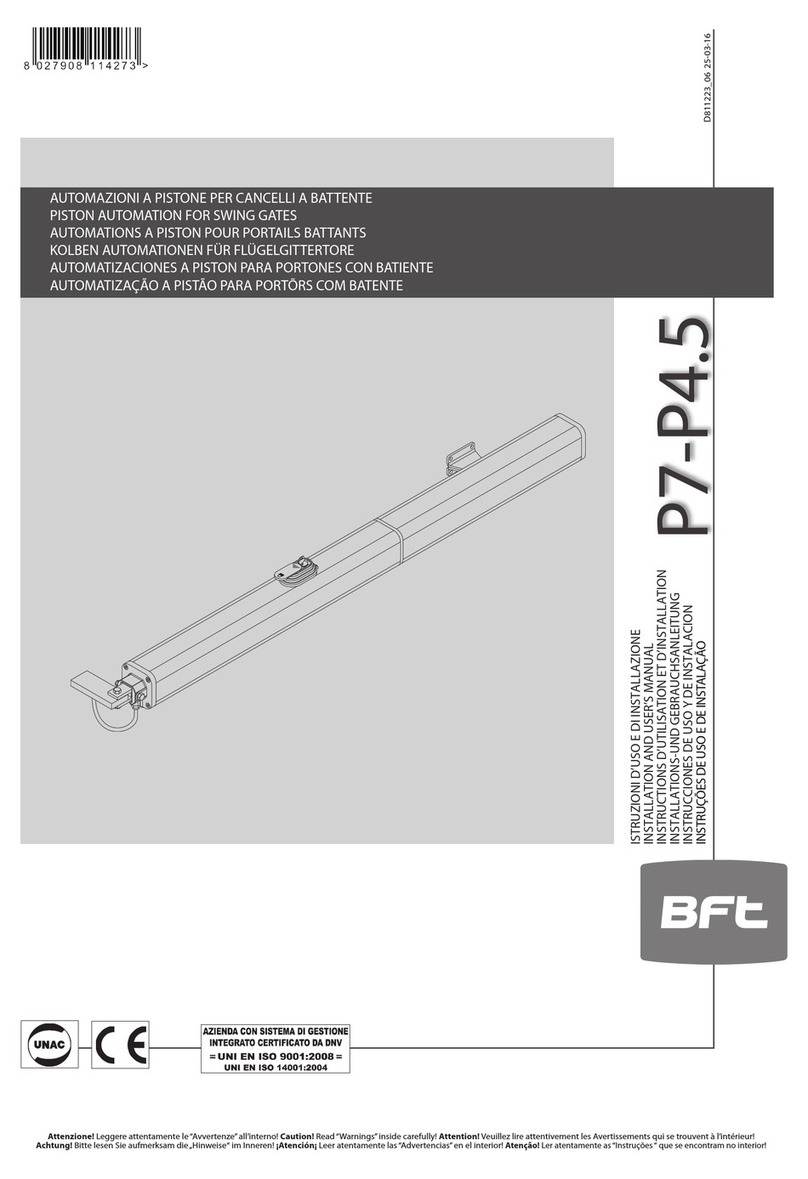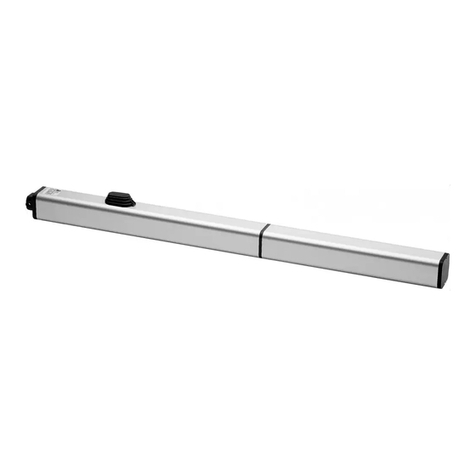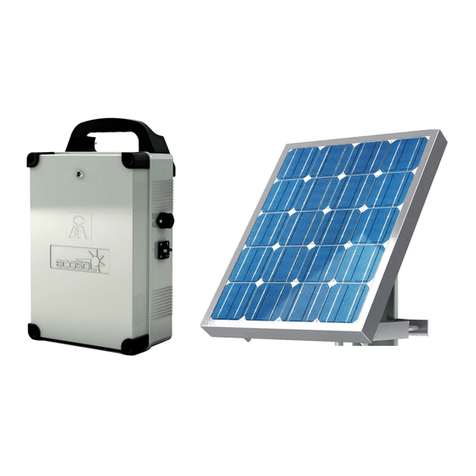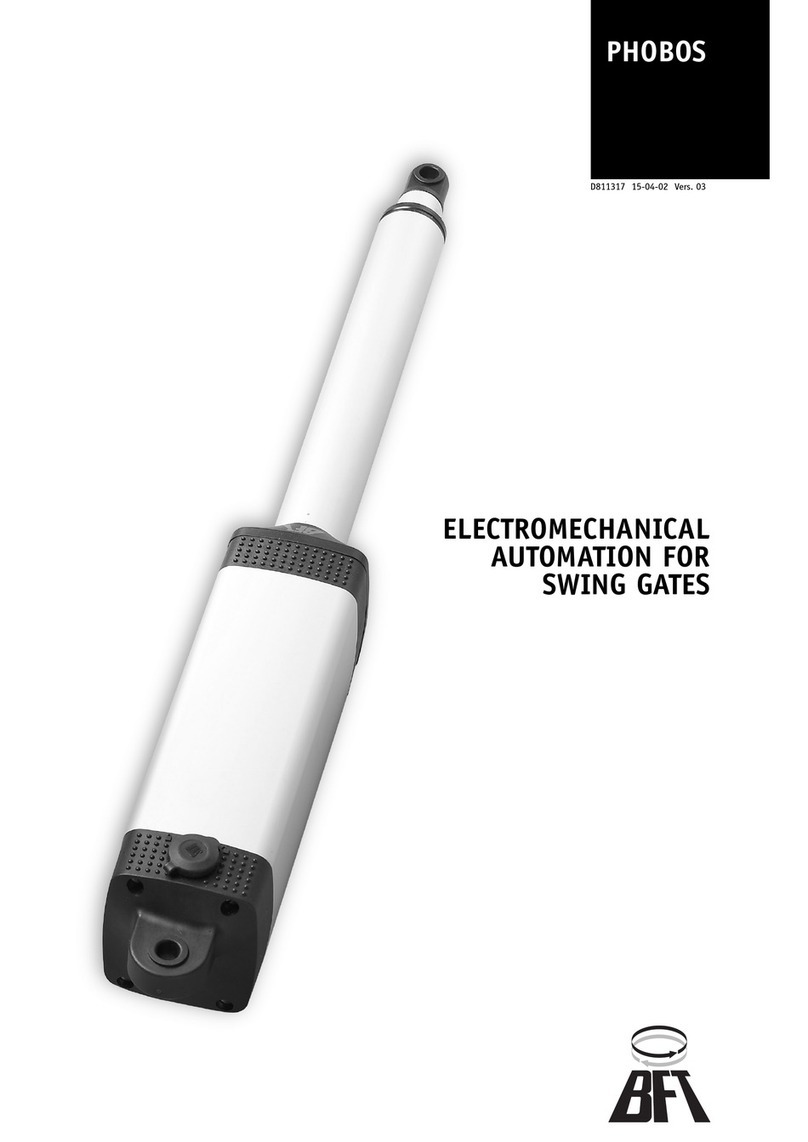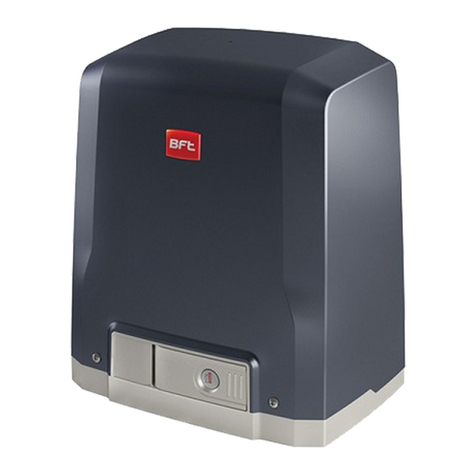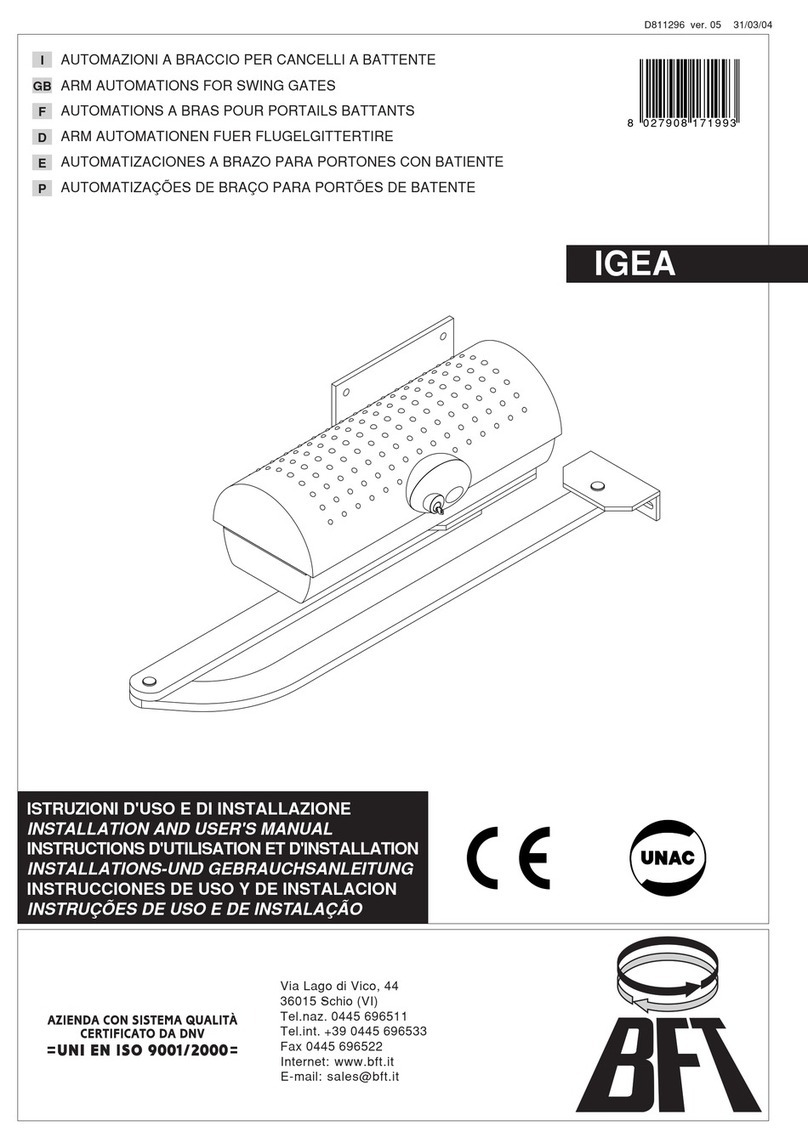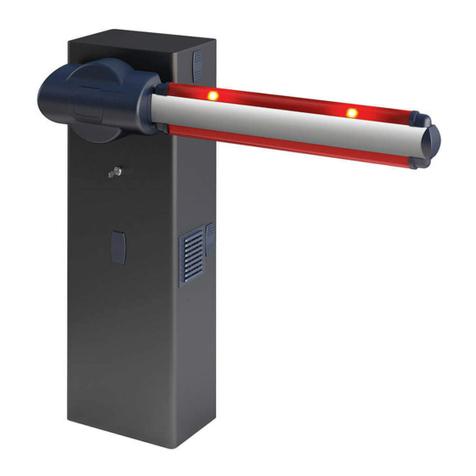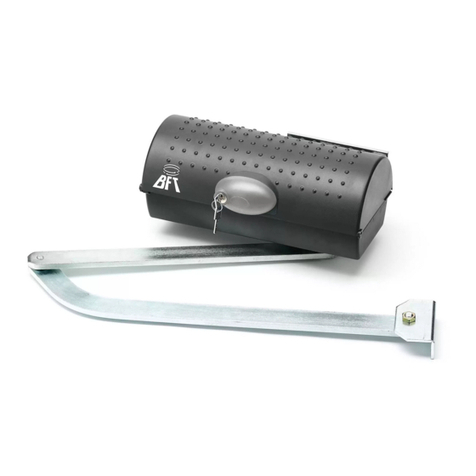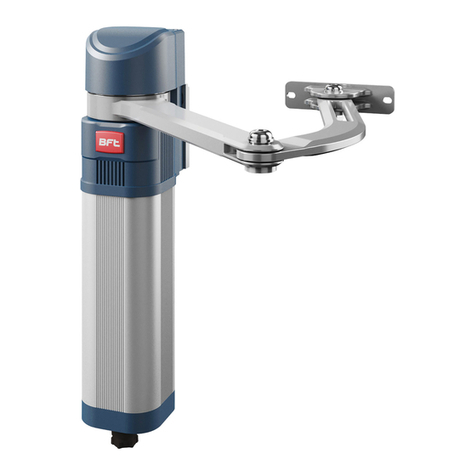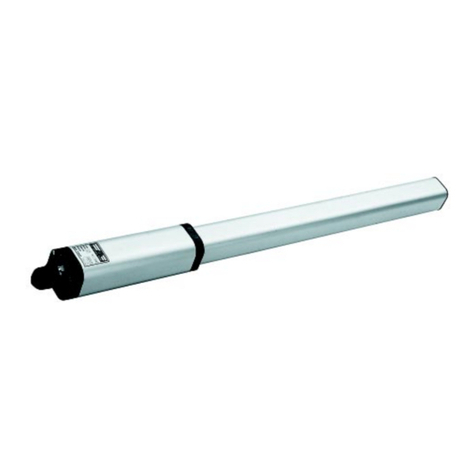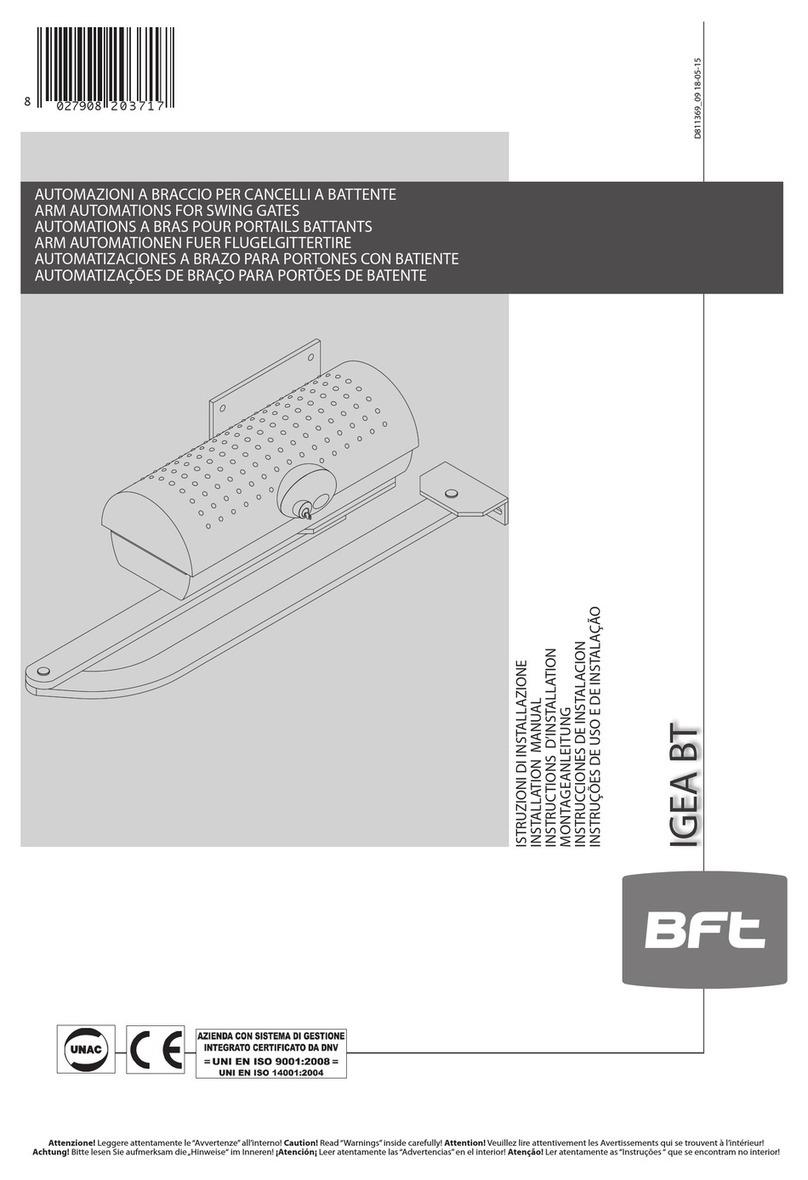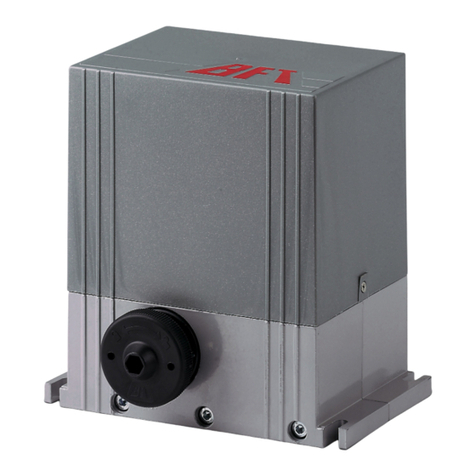MANUALE PER L’INSTALLAZIONE
ITALIANO
• La posizione di fissaggio del l’attuatore varia secondo il tipo di basculante.
Nel caso di basculanti a contrappesi con guida verticale (fig.3) l’asse
dell’albero di trasmissione dell’attuatore, deve essere circa 70-80mm
più basso del fulcro “F” delle leve del telo esistenti.
• Nel caso di basculanti a guide verticali e orizzontali, l’asse dell’attuatore,
deve trovarsi circa 100-110mm più basso della metà dell’altezza totale
della porta (fig.4).
• Nel caso di basculanti con telo snodato utilizzare PHEBE-C. L’asse dell’attua-
tore, deve trovarsi circa 150mm più basso della cerniera snodo “C” (fig.5).
• Tagliare la base di fissaggio “B” in eccedenza rispetto al telo della porta
basculante (fig.3).
• Praticare i fori di fissaggio sulla base e fissarla al telo con il sistema più idonei
al tipo di basculante (viti, rivetti, ecc.). I punti di fissaggio devono trovarsi in
punti rinforzati del telo e possibilmente anche sotto il motore stesso.
5.3) Montaggio degli alberi di trasmissione
• Fissare i due supporti albero laterali “S” al telo (fig.6). Devono essere
fissati saldamente al telaio della porta basculante e perfettamente in
asse con il foro dell’albero dell’attuatore.
• Posizionare le boccole adattatrici albero “B” in entrambi i supporti “S” ed
infilare i tubi quadri di trasmissione “T” fino ad inserirli nella sede albero
“A” (fig.7) dell’attuatore.
• Tagliare le parti di albero eccedenti rispettando le misure riportate in fig.8
in cui “B” è il braccio e “C” è la cassa contrappesi.
5.4) Bilanciamento della porta basculante
• Eseguire l’apertura manuale della porta basculante. Se con l’attuatore
montato, la porta non è più bilanciata, (fig.9) aumentare il contrappeso
come segue.
• Togliere i carter delle casse contrappesi, sganciare i contrappesi ed aggiun-
gere pesi “P” (piatti in ferro) fino a ripristinare il bilanciamento della porta.
N.B. Se l’attuatore è montato in posizione centrale, aumentare i contrap-
pesi in modo equivalente.
• Se l’attuatore (singolo), è montato in posizione laterale, aggiungere più
peso dal lato dell’attuatore. L’installazione laterale è possibile solo se
il telaio della basculante, ha una struttura sufficientemente rigida da
cansentire di trasmettere il moto da un solo lato.
• Se i contrappesi sono in ferro fissare i pesi “P” con saldature (fig.9).
Se i contrappesi sono in altro materiale, fissare i pesi “P” nel modo più
idoneo.
5.5) Montaggio dei bracci telescopici
ATTENZIONE: Prima di far ruotare l’albero dell’attuatore, verificare
che le camme che comandano i micro-finecorsa, ruotino liberamente
(allentate).
1) Se la porta basculante presenta la misura riportata in fig.10 superiore a
15mm, si possono utilizzare i bracci telescopici diritti (fig.11).
2) Se tale misura (fig.10) è inferiore a 15mm, sono necessari bracci tele-
scopici curvi (fig.12).
3) Posizionare l’attacco superiore “A” (fig.13) di ciascun braccio in entrambi
i lati della basculante.
4) Le misure riportate nelle fig.13, sono indicative. Possono variare secondo
gli ingombri della porta.
5) Saldare gli attacchi bracci “A”; se già presenti nella basculante, verificare
se possono essere utilizzati con il tipo di bracci telescopici scelti.
6) Aprire completamente la basculante e misurare la distanza “D” (fig.14)
tra il foro dell’attacco “A” ed il centro dell’albero di trasmissione.
7) Tagliare il guidabraccio ed il braccio motore rispettando le misure indicate
in fig.15 (la quota D è la distanza ricavata precedentemente).
8) Se le quote riportate in fig.15, non si possono rispettare per insufficiente
lunghezza, verificare se, a porta chiusa, il braccio telescopico rimane
inserito per almeno 70-80mm (fig.16). In caso non si rispetti questa con-
dizione individuare una posizione dell’attacco “A” più idonea o adottare
dei bracci più lunghi.
9) Fissare il braccio telescopico all’attacco “A” (fig.17) con il perno e copiglia
in dotazione.
10)Incastrare gli alberi di trasmissione “T” (fig.18) nelle rispettive sedi quadre
dei bracci motore, forare completamente alberi e boccole e fissare con
viti passanti e dadi.
6) PREDISPOSIZIONE IMPIANTO ELETTRICO
AVVERTENZE - Nelle operazioni di cablaggio ed installazione riferirsi alle
norme vigenti e comunque ai principi di buona tecnica.
I conduttori alimentati con tensioni diverse, devono essere fisicamente
separati, oppure devono essere adeguatamente isolati con isolamento
supplementare di almeno 1mm.
I conduttori devono essere vincolati da un fissaggio supplementare in pros-
simità dei morsetti, per esempio mediante fascette.
6.1) Componenti principali per una automazione (fig.19):
I Interruttore onnipolare omologato con apertura contati di almeno
3,5 mm provvisto di protezione contro i sovraccarichi ed i corto
circuiti, atto a sezionare l’automazione dalla rete. Se non presente,
prevedere a monte dell’automazione un interruttore differenziale
omologato di adeguata portata e soglia da 0,03A.
M-Q-R Attuatore con centralina di comando e ricevente incorporata
CTBA Bracci telescopici e tubi di trasmissione.
Fr Fotocellula (ricevente)
Ft Fotocellula (trasmittente)
T Trasmittente 1-2-4 canali
CC Controllo costa sensibile
CS Costa sensibile
D Scatola derivazione
P Pulsantiera di comando interna
Predisporre l’impianto elettrico (fig.19) facendo riferimento alle norme vigenti
per gli impianti elettrici CEI 64-8, IEC364, armonizzazione HD384 o altre
norme nazionali. Tenere nettamente separati i collegamenti di alimentazione
di rete dai collegamenti di servizio (fotocellule, coste sensibili, dispositivi di
comando ecc.).
ATTENZIONE! Per il collegamento alla rete, utilizzare cavo multipolare
di sezione minima 3x1.5mm2 e del tipo previsto dalle normative vigenti.
A titolo di esempio, se il cavo è all’esterno (all’aperto), deve essere
almeno pari a H07RN-F mentre, se all’interno (in canaletta), deve essere
almeno pari a H05 VV-F con sezione 3x1.5mm2 .
6.2) Configurazioni e collegamenti
Rappresentazioni di collegamenti per le diverse configurazioni, sono riportate
in fig.20a-20b-20c-20d.
• Fig.20a 1 PHEBE o PHEBEKIT con centralina a bordo
• Fig.20b 1 PHEBE-SQ con centralina a parete.
• Fig.20c 2 PHEBE-SQ con centralina a parete mod.HYDRA.
• Fig.20d 1 PHEBE con centralina a bordo mod.HYDRA ed
1 PHEBE-SQ senza centralina.
6.3) Passaggio cavi
In fig.21, si evidenzia il passaggio dei cavi dell’attuatore. Il carter è provvisto
di pareti sottili da tagliare con forbice.
Se la basculante non è provvista di un fascione centrale dove poter passare
i cavi di collegamento (fig.21), prevedere appropriate canalette.
Il tratto di cavi tra parete e porta mobile, deve avere un’ansa “A” (fig.22)
sufficientemente lunga da permettere il movimento della porta senza essere
sottoposta a tensionamento.
7) REGOLAZIONE FINECORSA
Tolto il cofano superiore dell’attuatore, i micro di finecorsa con le rispettive
camme si trovano sulla sinistra dell’operatore.
Il micro superiore è il micro che comanda la fermata in chiusura (1) .
Il micro inferiore è il micro che comanda la fermata in apertura (2).
Nell’albero di uscita sono montate le due camme che comandano i micro. La
camma deve intercettare il comando del micro, sempre dalla parte opposta
alla testa della vite di fissaggio della camma stessa.
Le camme si regolano come segue:
• Attivare lo sblocco manuale con l’apposita leva (fig.26).
• Chiudere completamente la porta (fig.23).
• Ruotare la camma di chiusura fino a sentire lo scatto del micro superiore
“1” e bloccarla in posizione avvitando la vite della camma.
• Aprire completamente la porta (fig.24).
• Ruotare la camma di apertura fino a sentire lo scatto del micro inferiore
“2” e bloccarla in posizione avvitando la vite della camma.
ATTENZIONE: Se le camme a fine manovra non intercettano i micro
di finecorsa, il motore continua a funzionare fino a quando termina
il tempo di lavoro impostato nella centralina (TW).
• Dare alimentazione al sistema e verificare la corretta posizione di chiusura
ed apertura. Eventualmente aggiustare la posizione delle camme quanto
basta.
• Verificare il fissaggio delle camme e rimontare il cofano superiore del-
l’attuatore.
8) QUADRO DI COMANDO
Per i collegamenti e le regolazioni della centralina, fare riferimento al manuale
istruzioni del quadro comando.
In fig.25a è riportata la morsettiera di collegamento per le versioni PHEBE-
SQ (versione senza centralina).
In fig.25b è riportata la morsettiera di collegamento per le versioni PHEBE.
Tenere nettamente separati i collegamenti di rete dai collegamenti in bassa
tensione.
10 - PHEBE Ver. 03
D811328_03
D811328_03






